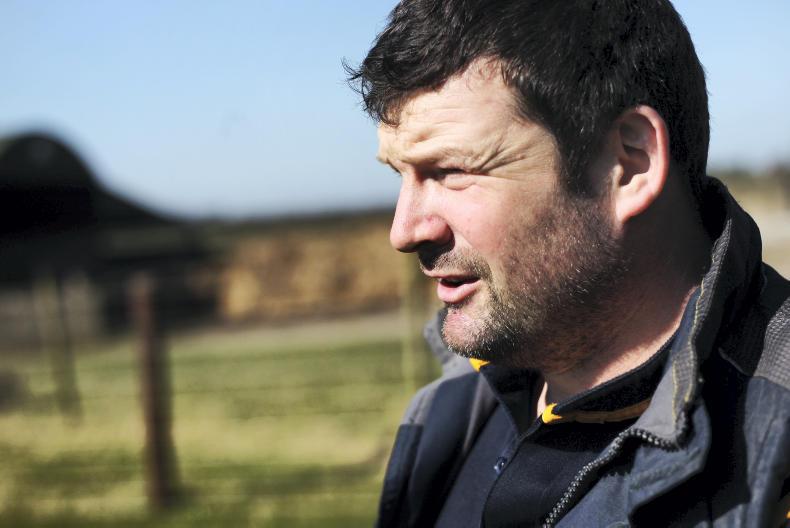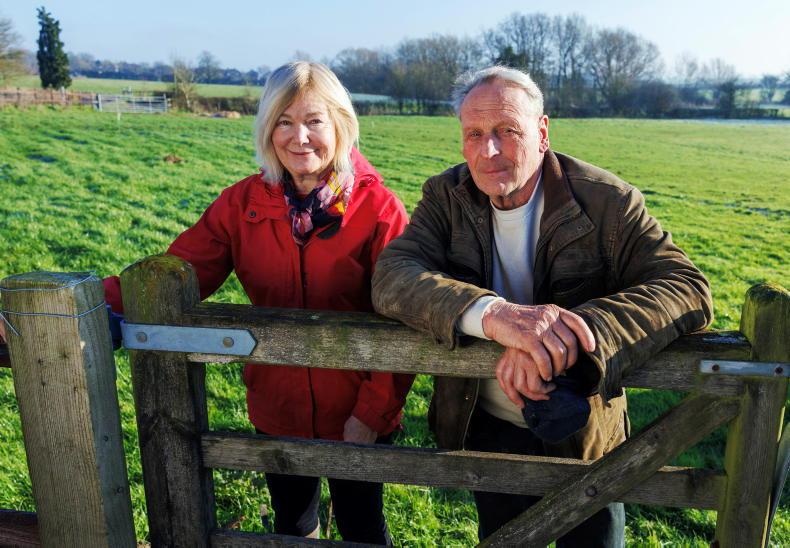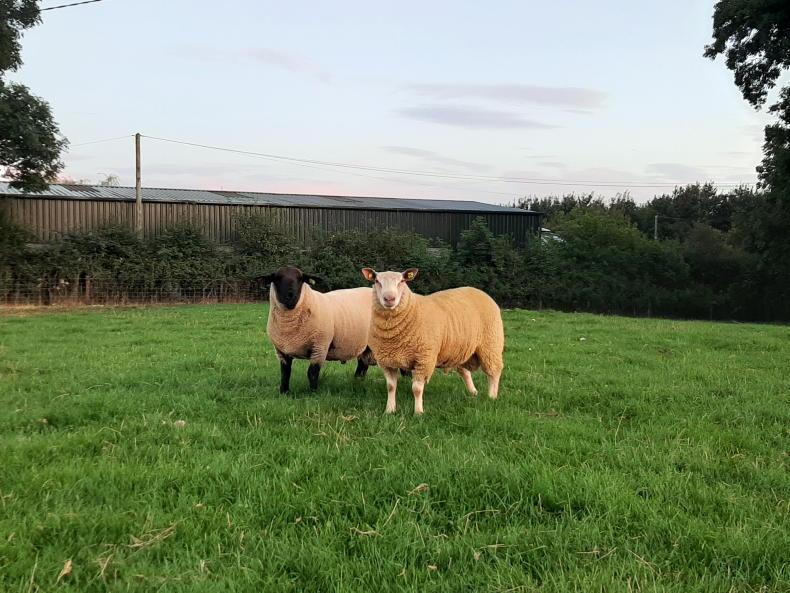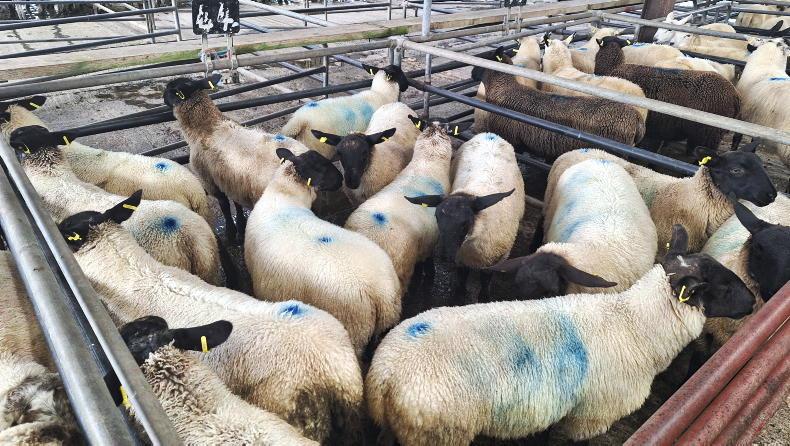As I mentioned in my last article, I was preparing to attend the Grassland Sheep Conference in the Horse and Jockey. This was an enjoyable day with a good attendance.
It was a useful opportunity to catch up with fellow farmers, enjoy a few hours away from work and discuss some issues pertinent to us sheep farmers.
It is always heartening to hear other people’s perspectives and realise that you are having similar experiences.
Since then, the sun has been shining here and I’m glad to say everything around the farm is starting to take on a healthier glow.
It is a wonderful sight to watch the fields and trees almost greening up before my eyes. Grass is growing at pace now on the farm and lambs seem to be thriving well due to this abundance of fresh grass and the sun on their backs.
Grass is growing at 69kg DM/ha after surplus paddocks have been removed and there are 14 days grazing ahead at the moment.
Silage
I have just started to make my silage for the coming winter and it will take a while before I have saved enough. However, with a good number of paddocks dropped from the rotation as surplus as it was too strong for the sheep to graze, this shouldn’t be an issue to complete.
There haven’t been big yields from the fields cut for silage so far but, as we are at the end of May, a lot of the grass varieties on the farm are beginning to go to seed and, as this happens, the feeding value of the silage reduces.
The benefit of these lower yields (five-to-six bales per acre or less in some) is that the fields are back into the grazing rotation quickly and replace the few paddocks that have to be dropped for silage in the meantime.
The heifers are also due to arrive on farm this week for the remainder of the grazing season which will also help greatly with maintaining grass quality.
They will act as a flying mob moving around the farm to where grass is in oversupply.
We have also managed to get the first of the reseeding done this week, which included a new lawn for Alison and the children. The farm reseeding took place in the ground that I had the Redstart on for the hoggets last winter and, as such, we decided to sow with a one-pass system this year as opposed to the usual stitching system due to the amount of ruts left after the bad winter.
The field itself was very clean, with only a small amount of volunteer weeds present. A half rate of glyphosate was sufficient to burn this off prior to reseeding.
Blowfly
I plan to apply Clik Extra to the lambs shortly to prevent blowfly strike. I used this product last year for the first time and was delighted at how it worked as it has 19 weeks’ cover against blowfly strike so, with any luck, I won’t have to treat lambs again during the summer this year.
All lambs will also have received cobalt as well when they are in the yard and possibly a worm drench depending on how the different FEC results come back for each mob.
Read more
Farmer writes: wheat, drainage and a souped-up Nissan Micra
Farmer Writes: farming on the southern tip of Europe
As I mentioned in my last article, I was preparing to attend the Grassland Sheep Conference in the Horse and Jockey. This was an enjoyable day with a good attendance.
It was a useful opportunity to catch up with fellow farmers, enjoy a few hours away from work and discuss some issues pertinent to us sheep farmers.
It is always heartening to hear other people’s perspectives and realise that you are having similar experiences.
Since then, the sun has been shining here and I’m glad to say everything around the farm is starting to take on a healthier glow.
It is a wonderful sight to watch the fields and trees almost greening up before my eyes. Grass is growing at pace now on the farm and lambs seem to be thriving well due to this abundance of fresh grass and the sun on their backs.
Grass is growing at 69kg DM/ha after surplus paddocks have been removed and there are 14 days grazing ahead at the moment.
Silage
I have just started to make my silage for the coming winter and it will take a while before I have saved enough. However, with a good number of paddocks dropped from the rotation as surplus as it was too strong for the sheep to graze, this shouldn’t be an issue to complete.
There haven’t been big yields from the fields cut for silage so far but, as we are at the end of May, a lot of the grass varieties on the farm are beginning to go to seed and, as this happens, the feeding value of the silage reduces.
The benefit of these lower yields (five-to-six bales per acre or less in some) is that the fields are back into the grazing rotation quickly and replace the few paddocks that have to be dropped for silage in the meantime.
The heifers are also due to arrive on farm this week for the remainder of the grazing season which will also help greatly with maintaining grass quality.
They will act as a flying mob moving around the farm to where grass is in oversupply.
We have also managed to get the first of the reseeding done this week, which included a new lawn for Alison and the children. The farm reseeding took place in the ground that I had the Redstart on for the hoggets last winter and, as such, we decided to sow with a one-pass system this year as opposed to the usual stitching system due to the amount of ruts left after the bad winter.
The field itself was very clean, with only a small amount of volunteer weeds present. A half rate of glyphosate was sufficient to burn this off prior to reseeding.
Blowfly
I plan to apply Clik Extra to the lambs shortly to prevent blowfly strike. I used this product last year for the first time and was delighted at how it worked as it has 19 weeks’ cover against blowfly strike so, with any luck, I won’t have to treat lambs again during the summer this year.
All lambs will also have received cobalt as well when they are in the yard and possibly a worm drench depending on how the different FEC results come back for each mob.
Read more
Farmer writes: wheat, drainage and a souped-up Nissan Micra
Farmer Writes: farming on the southern tip of Europe










SHARING OPTIONS